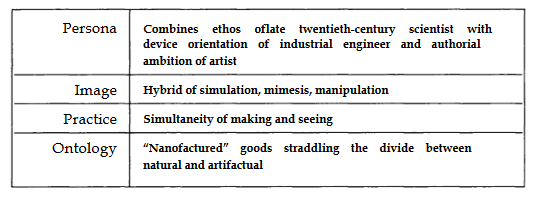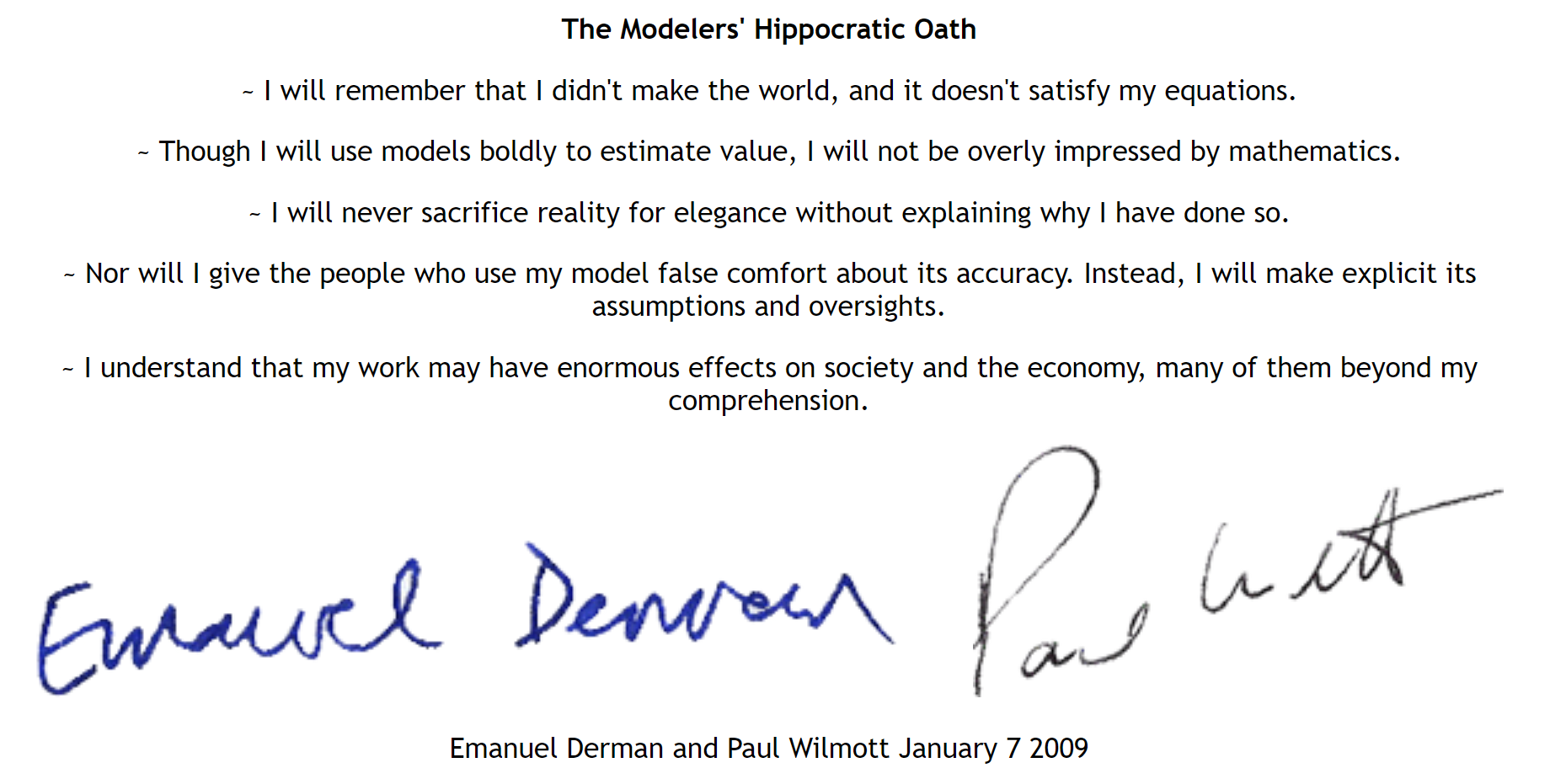Model
This note is about models, broadly understood.
Cf.
Cf.
- worldview
- concept and conceptualisation
- internal and mental models
- mathematical and computational model
- individual and collective models
Human-made computational or mathematical models are subjective and in their use/construction are like storytelling or art, they are socio-cultural products.
Models are meaningful in relation to their goals, audiences, questions.
For example, weather forecasts are only meaningful at the temporal scale and in references to the objectives and resources available to agents who wish to make decisions the models intend to inform (this presumes human-made models, consider non-intentional and non-rational models). This example illustrates how internal validity of a model or high viability of its predictions might not be useful. For example, for a human wanting to know the weather in the afternoon a highly reliable forecast of 30% rain over three months is not useful.
Models are performative. The idea here is that they are more than tool and instead act as active participant in decision-making processes (or more broadly in design and other deliberations/communications.) 1
E.g., in application to economics, see: MacKenzie, Donald A. An Engine, Not a Camera: How Financial Models Shape Markets. Cambridge, MA: MIT Press, 2006.
Four versions of "seeing" scientifically:
- 18th century (classical) "four-eyed" sight; truth-to-nature depiction
- 19th century "blind" sight of mechanical objectivity
- 20th century "physiognomic" sight of "trained" judgment
The first three give way to "haptic" sight by means of image-as-tool, inseparable from the scientific-self, made visible to the acolyte:
-subject to simulated manipulations -machine-generated virtual artefact, expertly extracted from an artificial reality, a model -altered in aspect, hue, or scale to make it artistically pleasing -no longer held to be a copy -the True and Beautiful necessarily converging for the sake of presentation -- not representation -deliberately enhanced to clarify, persuade, and/or please
Presentational (not representational), cf. Mark Making
Presentational rather than representational interpretation of science is an approach that emphasizes the performative and creative aspects of scientific images, rather than their mimetic or descriptive qualities. It is based on the idea that scientific images are not copies, but tools for manipulating, exploring and communicating phenomena that often escape representation. It is an approach that challenges the notion of scientific objectivity as a passive and neutral reflection of reality, and instead highlights the role of human (or nonhuman) agency, imagination and aesthetics in scientific practice.

Daston, Lorraine, and Peter Galison. Objectivity. New York: Zone Books, 2010.
Definitions
In Science
A model is a representation of an idea, an object, a process, or a system. Its purpose is to describe and explain phenomena that humans cannot experience directly. Models are central to:
- explaining
- predicting
- testing
- exploring
- understanding
- building knowledge
- storing knowledge
- transmitting knowledge
Models can be:
- physical objects
- fictional objects
- abstract objects
- set-theoretic structures
- descriptions
- equations
In biology and philosophy of biology there is a general scepticism about laws and the increasing emphasis on the construction of models.
Lloyd, Elisabeth Anne. The Structure and Confirmation of Evolutionary Theory. 1988. Reprint, Princeton: Princeton University Press, 1994.
Dupré, John. The Metaphysics of Biology. Cambridge: Cambridge University Press, 2021.
In Living Systems
The internal model of the world in living beings is a representation of the self and the environment. Living systems use such models to guide behaviour and predict outcomes of decisions. Different living beings have different internal models of the world, depending on their sensory abilities, cognitive capacities, and evolutionary histories. Some internal models of the world may be more accurate or adaptive than others, depending on:
- how well they match the actual state of affairs
- how well they can interoperate with other models
- how plastic they are in the face of change
- etc.
Learning, experience, feedback can influence such models. Some internal models are shared within groups.
Types of Models
- scale models
- analogical models
- idealized models
- toy models
- minimal models
- phenomenological models
- exploratory models
- models of data
- Reference Frame
- worldviews
Models in Science (Stanford Encyclopedia of Philosophy)
Quality Criteria
There can be perfect models or a perfect decisions.
The real world is complete but is exceedingly large, complex, and occurs only once, preventing experimentation.
Benefits
- facilitate exchange between stakeholders about the potential of possible actions
- expose, mitigate or distribute Power
- aid thinking and analysis
Decision-Making
Models have a close relationship to Decision Making. It is likely that a model of some kind is required for a decision.
In many cases an improvement of the model does not change the context of decision-making, which includes political disagreement, opportunity costs, and the prevalent narrative about the situation and its future.
Ethics of Modelling
The partial and biased nature of all models implies limitations and remedial actions.
- diversity and co-presence of multiple models (include and empower possible agents), cf. Participation

Cf. Financial Modeller's Manifesto
Principles of Responsible Modelling
- Define the purpose
- Don't say 'I don't know'
- Make value judgements
- Write about the real world
- Use many models
Thompson, Erica. Escape from Model Land: How Mathematical Models Can Lead Us Astray and What We Can Do About It. New York: Basic Books, 2022.
References
Page, Scott E. The Model Thinker: What You Need to Know to Make Data Work for You. New York: Basic Books, 2018.
Subnotes
Footnotes
For a parallel argument, see the work of Stanislav Roudavski on distributed socio-technical systems: Roudavski, Stanislav. ‘Virtual Environments as Situated Techno-Social Performances: Virtual West Cambridge Case-Study’. In New Frontiers, the 15th International Conference on Computer Aided Architectural Design Research in Asia (CAADRIA), edited by Bharat Dave, Andrew I-kang Li, Ning Gu, and Hyoung-June Park, 477–86. Hong Kong: CAADRIA, 2010. https://doi.org/10.5281/zenodo.2553682. And: Roudavski, Stanislav, and Jon McCormack. ‘Post-Anthropocentric Creativity’. Digital Creativity 27, no. 1 (2016): 3–6. https://doi.org/10/gfsp7w.˄
Backlinks